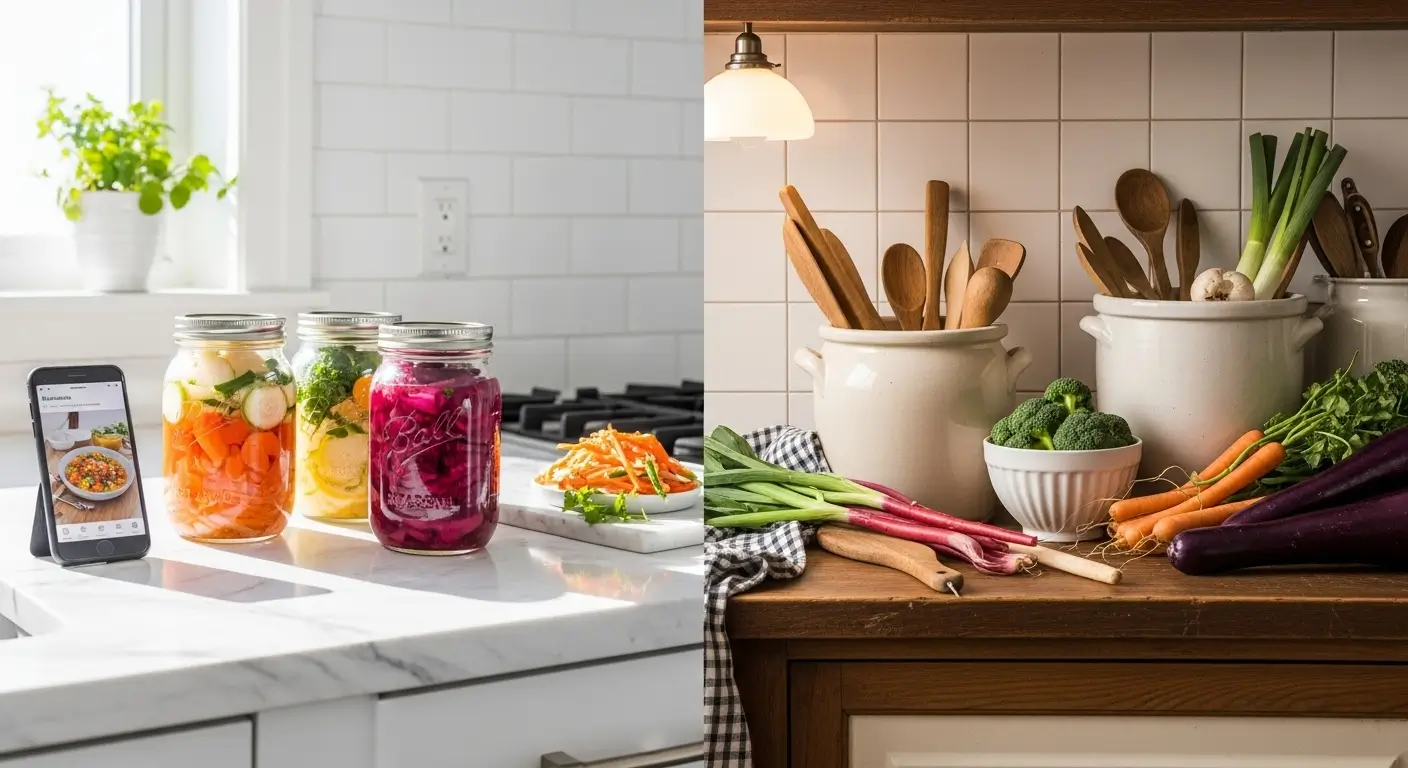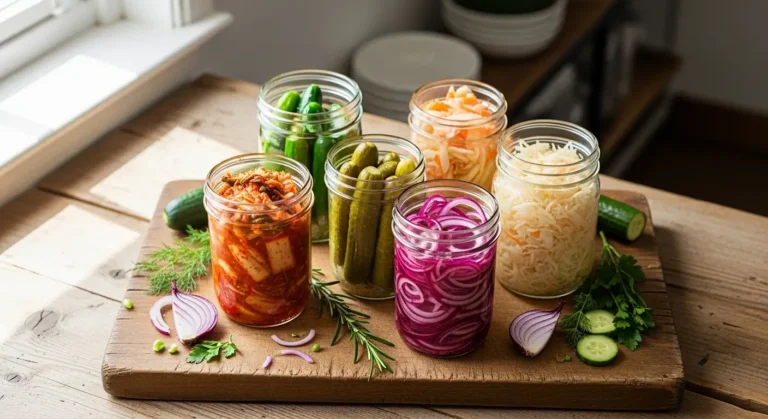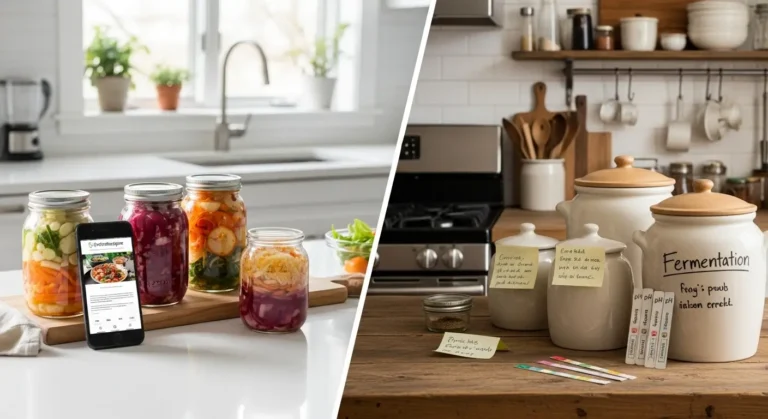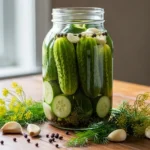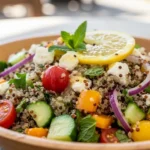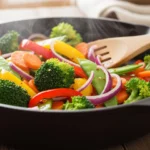So, fermentation has totally blown up lately—it’s gone from being this quirky niche thing to something everyone’s trying in their kitchen. And honestly? It’s pretty awesome. You get health perks, plus it’s just fun to create stuff like tangy sauerkraut or rich, savory miso. But here’s the thing: not every fermentation guide out there is going to vibe with what you need.
That’s where PedroRecipes.com and WildFermentation.com come in. They’re both great, but they’re super different. Pedro Recipes is like your modern, beginner-friendly buddy who wants you to get quick wins. Wild Fermentation? That’s more of a traditional, “let’s explore and experiment” approach, thanks to fermentation legend Sandor Katz. Let me break down which one might be your jam.
Why Picking the Right Guide Actually Matters
Look, home fermentation can be as chill or as intense as you want it to be. But if you pick a guide that doesn’t match your style, you might end up confused, waste a bunch of ingredients, or just lose steam completely. By figuring out each site’s vibe—their teaching style, recipe focus, and how they support you—you’ll find the one that actually helps you nail it. Whether you want quick everyday ferments or you’re ready to go deep into wild cultures, there’s something for you.
What Each Site’s All About
Pedro Recipes: Modern and Super Accessible
PedroRecipes.com makes fermentation feel totally doable. They’ve got clean layouts and gorgeous step-by-step photos, and you don’t need fancy equipment. Every recipe has clear ingredient lists and helpful notes about swapping things out if needed.
Their stuff, like Quick Pickled Carrots and Fermented Garlic Confit, focuses on ingredients you probably already have, and you can do small batches. Best part? You’ll see results in just a few days, which is perfect when you’re busy but still want to try something cool.
Wild Fermentation: Traditional and Exploratory
WildFermentation.com is Sandor Katz’s creation, and it’s got this whole adventurous, experimental spirit going on. The blog and his books are all about wild fermentation—basically, you’re working with the natural microbes already on your veggies.
The posts mix in personal stories, cultural background, and recipes that are more like guidelines. You’re encouraged to watch what’s happening and adjust as you go, rather than following strict rules. It’s less “do exactly this” and more “let’s see what happens!”
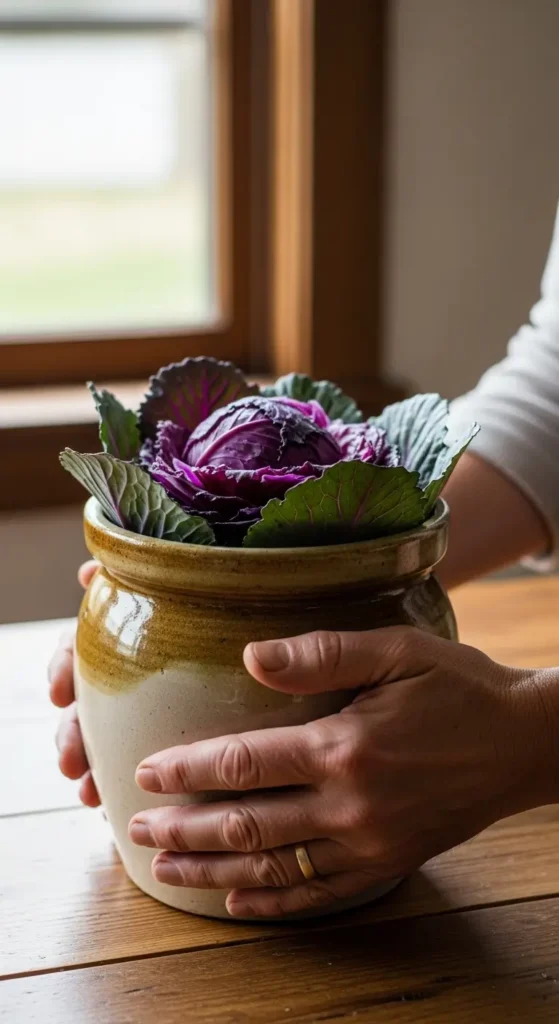
How They Actually Teach You
Pictures vs. Stories
- Pedro Recipes is all about those clean visuals and bullet-point steps. If you’re someone who learns by seeing things clearly laid out, this is your spot.
- Wild Fermentation pulls you into stories and the history behind fermentation. It’s about getting into that experimental headspace rather than just checking boxes on a recipe.
Playing It Safe vs. Getting Creative
- Pedro Recipes uses starter cultures and specific salt measurements so you get consistent, predictable results every time.
- Wild fermentation embraces the chaos a bit—seasonal changes, regional differences, unexpected flavors and textures. It’s all part of the fun.
What It’s Like to Actually Use These Sites
What You’ll Need
- Pedro Recipes: Just your standard mason jars, regular spices, and maybe a kitchen scale. Nothing fancy—stuff you probably have already.
- Wild Fermentation: They encourage you to seek out cool heirloom produce, quality natural salts, and sometimes bigger equipment like fermentation crocks or weights if you’re doing larger batches.
Staying Safe and Fixing Problems
- Pedro Recipes keeps it simple with quick safety tips—make sure your veggies stay underwater; toss anything with weird colors or smells.
- Wild Fermentation goes a bit deeper into pH levels and the science of microbes, but they trust you to learn by observing and practicing. It’s more hands-on learning.
Both sites have their strengths, honestly. If you want straightforward, reliable recipes that fit into your busy life, Pedro Recipes is probably your best bet. But if you’re the type who loves experimenting and wants to really understand fermentation on a deeper level, Wild Fermentation will be your new obsession. Either way, you’re going to have fun—and eat some seriously delicious stuff.
Detailed Comparison Table
| Feature | PedroRecipes.com | WildFermentation.com |
|---|---|---|
| Approach | Modern, visual, quick batches | Traditional, narrative, exploratory |
| Fermentation Style | Starter cultures, controlled brines | Wild fermentation, natural cultures |
| Equipment | Mason jars, basic weights | Crocks, weights, optional airlocks |
| Time to First Batch | 1–7 days | 1–14 days (variable) |
| Instruction Format | Step-by-step images & bullets | Story-driven text with cultural context |
| Safety Guidance | Concise tips | Ecological understanding & pH notes |
| Community Interaction | Email newsletter, chat widget | Workshops, reader-submitted experiments |
| Best For | Busy beginners | Curious explorers & traditionalists |
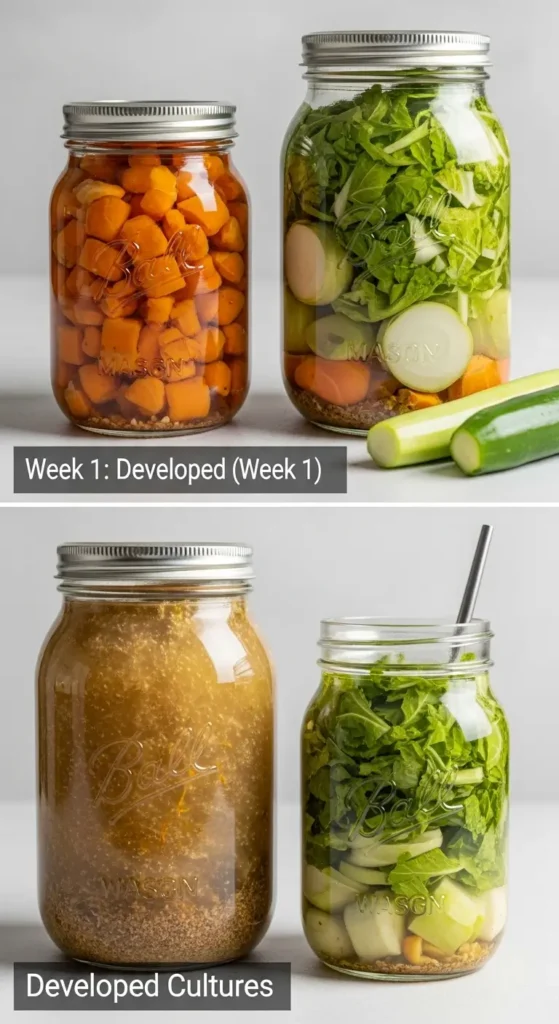
The Good, the Bad, and the Fermented
Pedro Recipes
What’s Great:
- Super beginner-friendly recipes that won’t make your head spin
- Clean, visual layouts that are easy to follow
- You get fast results without needing a bunch of fancy gear.
- Inclusive ingredient choices (including halal-compliant options)
What’s Not So Great:
- Doesn’t dive too deep into the science of microbes
- Not a ton of traditional or regional recipes
- Pretty basic when it comes to troubleshooting help
Wild Fermentation
What’s Great:
- Rich cultural and historical background that makes it fascinating
- Really pushes you to get creative and experiment
- Teaches you about microbial ecology (the nerdy stuff!)
- Huge collection of wild fermentation recipes to explore
What’s Not So Great:
- Can feel overwhelming if you’re just starting out
- Less visual guidance (more reading, fewer pictures)
- Results can be hit-or-miss, which might frustrate some people.

Real People, Real Fermentation Stories
The Time-Pressed Explorer
Meet Jenna: She’s got a full-time job and wants to try fermentation without it taking over her life.
Our take: Pedro Recipes’ Quick Pickled Carrots are perfect. Just a jar and some salt, and boom—tangy deliciousness in three days. Easy win.
The Culinary Adventurer
Meet Luis: This guy is all about farm-to-table cooking and wants to see how local wild microbes create unique flavors.
Our take: Wild Fermentation’s Wild Cabbage Kraut project is right up his alley. He can forage, watch what happens, and taste how the seasons change the flavor.
The Family Health Seeker
Meet the Ahmed family: They want gut-friendly foods but have some picky eaters to deal with.
Our take: Start gentle with Pedro Recipes’ Fermented Garlic Confit—it’s mild and approachable. Once everyone’s on board, try Wild Fermentation’s Sweet Beet Kvass for something more adventurous.
So, what should you do?
If You Want Quick Success:
Start with Pedro Recipes. Build your confidence with predictable, small-batch ferments that actually work.
If You Want Deep Knowledge:
Move to Wild Fermentation once you’ve got the basics down. You’ll learn about wild cultures and regional techniques that’ll seriously level up your game.
If You Want the Best of Both:
Honestly? Use both! Pedro Recipes for your weekday projects when you’re busy, and Wild Fermentation for weekend adventures when you’ve got time to geek out.
Questions You’re Probably Wondering About
Do I need fancy equipment to start?
Nope! Most Pedro Recipes stuff just needs regular glass jars and kitchen weights you probably already have. Wild Fermentation might mention crocks, but they usually show you how to make do with what’s in your cupboard.
Which style is safest for beginners?
Starter-culture ferments (like on Pedro Recipes) are more predictable and forgiving. Wild fermentation needs you to pay closer attention, but the flavors you get are way more interesting.
How long does this stuff take?
Depends on what you’re making. Quick ferments might be done in 1–3 days, while complex wild ferments could take two weeks or more. Temperature and those little microbes doing their thing play a big role.
What if my ferment grows a white film on top?
That’s usually kahm yeast—it’s harmless but can mess with the flavor a bit. Pedro Recipes says just skim it off. Wild Fermentation explains what it actually is and when you might want to remove it or just leave it alone.
Can my kids help out?
Totally! Simple Pedro Recipes ferments are safe and fun for kids to try. Wild fermentation projects can involve older kids in foraging and sensory experiments, which they’ll probably think is pretty cool.
Conclusion
Look, both PedroRecipes.com and WildFermentation.com are awesome—they just serve different purposes. Go with Pedro Recipes if you want clear instructions and fast results and don’t want to buy a bunch of stuff. Choose Wild Fermentation if you’re into cultural stories, wild microbial experiments, and trying things without a strict roadmap.
A lot of home cooks actually use both: quick projects to get comfortable with fermentation, then those deeper, story-rich explorations to build real skill and creativity. There’s no wrong answer here!
Ready to level up your fermentation game? Check out our growing library of fermented food guides—everything from quick weekday projects to wild-culture adventures. You’ll find recipes that taste amazing and are great for your gut. Happy fermenting!

